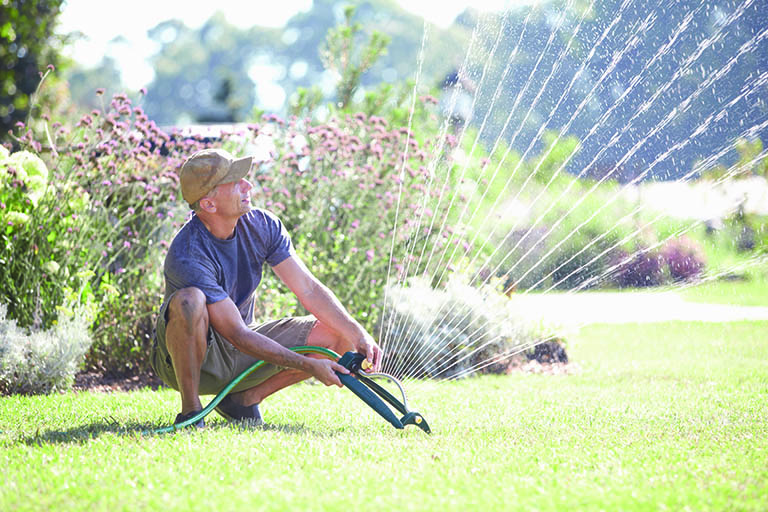Inspiration Guide
Three tips for saving water in your yard

The team at Scotts shared the following tips and insights to help homeowners understand ways to maximize lawn water use efficiency all season long.
#1 You can water less
How much water do lawns really need? It may be a surprise but our lawns are well adapted to thrive with way less water than many realize. The majority of lawns rely on rainfall for all their water needs, especially in the moderate spring and fall months. During summer when irrigation begins, try comparing how your lawn responds to a few minutes less of watering and then keep adjusting your watering duration times down until you reach the balance of savings and healthy green grass.
#2 Mow high and feed
Did you know how you mow affects how much water your lawn needs? The easiest and best step you can take when mowing is to set your mower at the highest setting. Mowing high puts less stress on your grass and encourages more rooting. Thus, the higher you mow the deeper your roots will grow and reach more water than a lawn that is mowed short. Fertilizing in the spring and fall months also gives your lawn the resources it needs to grow well, prepare itself for summer stress and bounce back afterward. A thick dense lawn helps capture water by slowing its runoff and channeling more into the soil and roots versus a thin bare lawn. Studies show how feeding helps grass grow greener and do better with less water than an unfed but well-watered grass.
#3 Be smart about irrigation
Whether you have simple above ground hoses or an advanced in-ground irrigation system, how you water makes all the difference for optimal grass health and water conservation. The single best time to water is early morning as this helps hydrate your grass plants before high-noon heat and wind. Avoid evening watering as this can make lawns more susceptible to certain diseases. Watering daily for 10-15 minutes per zone does a better job of matching where roots are in the top few inches of the soil. Deep watering often puddles, which can cause runoff and even go past the roots in soil. Periodically, check sprinkler head patterns, look for and repair any leaks, and think about upgrading to a smart irrigation controller, which watches the weather to estimate water needs automatically for you.
Conserving water and improving water quality is our number one environmental priority at ScottsMiracle-Gro. That’s why we’ve made changes to our product formulation, improved our application devices, and formed alliances with key environmental partners, like the National Association of Conservation Districts (NACD), in critical areas across the United States.
“By implementing these tips, homeowners can directly impact their local environment,” said NACD President Michael Crowder. “Efficient water use and good yard management can ensure plenty of high-quality water is available for conserving habitat and biodiversity locally.”
Homeowners can learn additional tips from their local conservation district, as well as from the Backyard Conservation materials developed by NACD in partnership with The Scotts Miracle-Gro Foundation.
Project courtesy of Scotts and written by Phil Dwyer, PhD, Research Principal, ScottsMiracle-Gro
